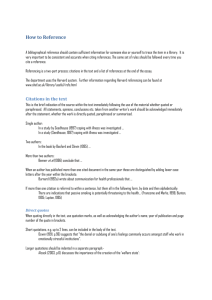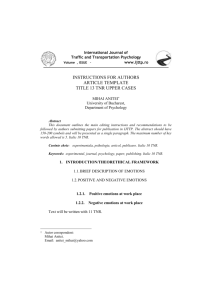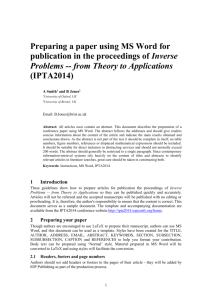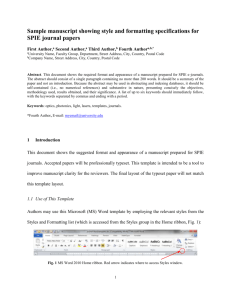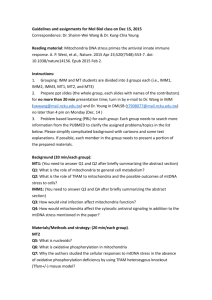Sensors
advertisement
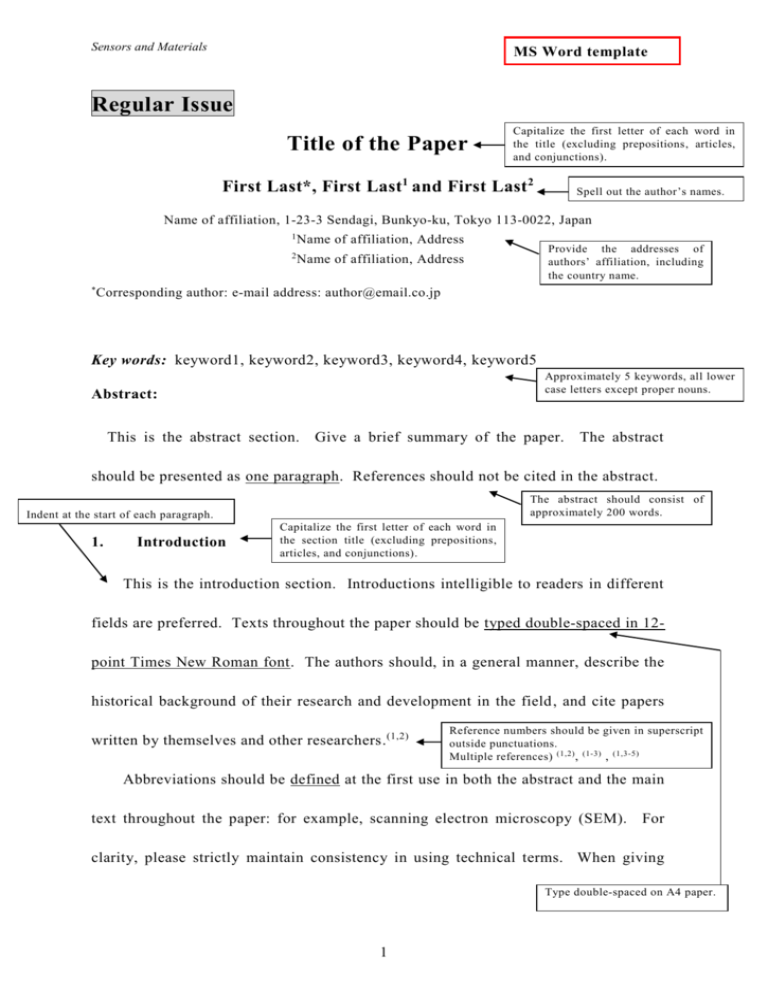
Sensors and Materials
MS Word template
Regular Issue
Title of the Paper
Capitalize the first letter of each word in
the title (excluding prepositions, articles,
and conjunctions).
First Last*, First Last1 and First Last 2
Spell out the author’s names.
Name of affiliation, 1-23-3 Sendagi, Bunkyo-ku, Tokyo 113-0022, Japan
*
1
Name of affiliation, Address
2
Name of affiliation, Address
Provide the addresses of
authors’ affiliation, including
the country name.
Corresponding author: e-mail address: author@email.co.jp
Key words: keyword1, keyword2, keyword3, keyword4, keyword5
Approximately 5 keywords, all lower
case letters except proper nouns.
Abstract:
This is the abstract section.
Give a brief summary of the paper.
The abstract
should be presented as one paragraph. References should not be cited in the abstract.
The abstract should consist of
approximately 200 words.
Indent at the start of each paragraph.
1.
Introduction
Capitalize the first letter of each word in
the section title (excluding prepositions,
articles, and conjunctions).
This is the introduction section. Introductions intelligible to readers in different
fields are preferred. Texts throughout the paper should be typed double-spaced in 12point Times New Roman font. The authors should, in a general manner, describe the
historical background of their research and development in the field , and cite papers
written by themselves and other researchers. (1,2)
Reference numbers should be given in superscript
outside punctuations.
Multiple references) (1,2) , (1-3) , (1,3-5)
Abbreviations should be defined at the first use in both the abstract and the main
text throughout the paper: for example, scanning electron microscopy (SEM). For
clarity, please strictly maintain consistency in using technical terms. When giving
Type double-spaced on A4 paper.
1
Sensors and Materials
units, consistently leave a space between value and unit: 5 mm, 10 V, 10 mA (with
spaces), except for 700 oC and 90% (without spaces).
Units) Use s for second, min for minute, and h for hour.
2.
Materials and Methods
2.1
Use italic font for the subsection title
and capitalize only the first letter of the
subsection title and proper nouns.
Title of subsection
This is the experimental section.
The authors should explain the materials and
methods used in their experiments appropriately using figures and tables.
The
explanations of figures and tables are suggested to be given as follows. Figure 1
shows the experimental setup used in this study.
shown in Fig. 2.
The details of its structure are
“Figure” is spelled out at the beginning of the sentence (e.g., Figure 1, Figures
1 and 2, Figures 1(a)-1(d)), and abbreviated elsewhere in the sentence (e.g.,
Fig. 2, Figs. 2 and 3, Figs. 2-4)
Table 1 summarizes the experimental results.
Use Arabic font for Table numbers.
If references are mentioned in a sentence at the beginning, the word reference(s)
should be spelled out as follows. Reference 3 provides more details of experimental
procedures. Within the sentence, it can be abbreviated as follows. More details of
experimental procedures are explained in ref. 3.
“Reference(s)” is spelled out at the beginning of the
sentence (e.g., Reference 1), and abbreviated
elsewhere in the sentence (e.g., ref. 3, refs. 3 and 4).
Citation
Figure
Table
Reference
Equation
Beginning
of sentences
Figure 1
Table 1
Reference 1
Equation (1)
Elsewhere
Fig. 1
Figs. 1(a) and 1(b)
Figs. 2-4
Table 1
Table 1 and 2
ref. 1
refs. 1 and 2
eq. (1)
eqs. (1) and (2)
2.2
Title of subsection
Equations must be numbered using (1), (2), and so forth.
2
Sensors and Materials
Use appropriate editing applications (e.g., equation editor).
Y = A{B+C[D(E-F)+G(H-I)]}.
(1)
“Equation” is spelled out at the beginning of the sentence (e.g.,
Equation (1)), and abbreviated elsewhere in the sentence (e.g.,
eq. (1), eqs. (1) and (2)).
Equation (1) is an example of an equation with three types of brackets. In general,
variables are given in italic (e.g., x, y) and vectors should be given in bold italic (e.g.,
A, B). Constants, units, symbols of operation, and chemical symbols are described in
roman.
The following Latin words should be in italic: et al., e.g., in situ, ex situ, in vivo, in
vitro. On the other hand, the following should be in roman print: i.e., etc., vs, via.
Latin words:
Italic letters for et al., e.g., in situ
Nonitalic letters for i.e., etc., vs, via
3.
Results
This is the results section.
The authors should describe the results of their
experiments.
3.1
Title of subsection
First paragraph. In this section, the authors should describe the results of their
experiments.
Second paragraph.
3.2
Title of subsection
First paragraph. In this section, the authors should describe the results of their
experiments.
3
Sensors and Materials
Second paragraph.
4.
Discussion
This is the discussion section. The authors should evaluate the experimental results,
compare them with other data, and discuss the research results.
The results and
discussion sections can be summarized in one section.
5.
Conclusions
This is the conclusion section.
The authors should briefly summarize the
conclusions of their study. Itemized findings may be easy for readers to understand.
Acknowledgments
This is the acknowledgement section.
For example, the authors may start this
section with “This work was supported by ... .”
The followings are examples of
reference format.
References
Author: First name (initial). middle name (initial). family name (spelled out)
(e.g., D. S. Adachi) Avoid the use of et al.
1
T. M. Green, R. Matsumoto and M. Sakano: Sens. Mater. 23 (2011) 550.
Leave a space after period.
Journals Author’s name: Journal Name Volume no. (Publication year) page.
*Use the abbreviation of the journal name if commonly used. Give the first page number
only. “p.” is unnecessary.
4
Sensors and Materials
2
H. Yamamoto: Electromagnetic Measurements and Their Automation, ed. Y. Sugiyama
(MYU Scientific Publishing, Tokyo, 1987) Chap. 1.
Books Author’s name: Book Title, ed(s). Editor’s name (Publication company,
City of publication, Publication year) Page or chapter no.. (e.g., p. 1, pp. 1-3)
3
Y. Suzuki, H. Hida, T. Suzaki, S. Fujita, Y. Ogawa, A. Okamoto, T. Toda and T.
Nozaki: Proc. GaAs IC Symp. Technical Digest 1989, eds. K. Ishida and M. Aida
(IEEE, New York, 1989) pp. 129-130.
Proceedings Author’s name: Proceedings Title, ed(s).
Editor’s name (Publication company, City of publication,
Publication year) pp. pages.
Proceedings (published by publication company) Follow the format
for books.
4
H. Tanaka and T. Suzaki: MYU Research Technical Report No. 33 (2010).
Technical reports Author’s name: Report title Report no.
(Publication year).
5
S. Inoue, K. Arai and M. Takahashi: Japan Patent No. 664567 (2000).
Patents Applicant’s name: Patent name Patent no. (Acquisition year).
6
XYZ Institution: Homepage of XYZ Institution, http://xyz-institution.com (accessed on
April 2010).
Online data Author’s or organization’s name: Page title, URL
(accessed on access date).
[Notes]
For publications written in languages other than English, specify the language at the
end of the reference sentence (e.g., ... (in Japanese)).
For papers that have been accepted for publication but have not yet been published,
specify their state at the end of the reference sentence (e.g., ... (in press).).
For references in CD-ROM, add “(CD-ROM)” to the end of the reference sentence
(e.g., ... (CD-ROM).)
5
Sensors and Materials
Table Legends
Table 1
This is the caption of Table 1.
[Note]
Do not use vertical separator lines.
Figure Legends
Fig. 1.
This is the caption of Fig. 1.
Fig. 2.
This is the caption of Fig. 2.
Fig. 3.
This is the caption of Fig. 3.
[Notes]
Provide figures with a well-balanced size because printed figures will be reduced. Prepare
figures so that the letters in the figures will be clear in the printed form (with a width of
less than 12 cm)
Figures, in particular, those with multiple data lines, must be clear even when they are
printed in black and white (use different types of lines, or insert a legend into the figure).
If you desire a color printing, state Color printing near the corresponding figure.
10 pt fonts (with a width of about 2 mm in the printed form) are desirable. Use general
European fonts, such as Times New Roman and Ariel.
Avoid using excessively thin lines. Lines should have a width of at least 0.5 mm in the
printed form.
[Submission of figures and tables]
Save the figures and tables used in your paper in an MS word file.
You may submit original data in eps, wmf, or pdf file format, which should be organized in a
folder. Photographs in tiff, jpeg, or png file format are also possible (photographs only).
6
